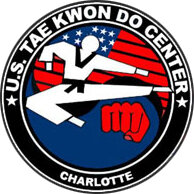So, what is Taekwondo?
The Kukkiwon, the headquarters of Taekwondo!
Taekwondo history and Korean history are intertwined.
Taekwondo is a Korean martial art that has grown as a global sport since the foundation of the World Taekwondo Federation in 1973. The origins of Taekwondo can be traced to the early history of the Korean people on the Korean peninsula. There have been found records of a martial art in Korea from the Kogooryo Dynasty in 37 B.C.E., which is in the northern part of the Korean peninsula.
These earliest forms of Korean martial arts are known as 'Taek Kyon'. Evidence that a Korean martial art was being practiced have been found in tombs with wall paintings show two men in fighting-stance.
Korea and her history can be divided into three kingdoms:
1. Koguryo (37 B.C. - 668 A.D.)
2. Paekje (18 B.C. - 600 A.D.)
3. Silla (57 B.C. - 936 A.D.)
Silla unified the kingdoms after winning the war against Paekje in 668 A.D. and Koguryo in 670 A.D. The Hwa Rang Do played an important role at this unification. The Hwa Rang Do was an elite group of young noble men, devoted to cultivating mind and body and serves the kingdom Silla. The best translation for HwaRang would probably be "flowering youth" (Hwa ="flower", Rang="young man"). The HwaRang Do had an honor-code and practiced various forms of martial arts, including Taekyon and Soo Bakh Do. The old honor-code of the HwaRang is the philosophical background of modern Tae Kwon Do. What followed was a time of peace and the HwaRang turned from a military organization to a group specialized in poetry and music. It was in 936 A.D. when Wang Gun founded the Koryo dynasty, an abbreviation of Koguryo. The name Korea is derived from Koryo.
During the Koryo Dynasty the sport Soo Bakh Do, which was used as a military training method, became popular. During the Yi-dynasty (1392 CE - 1910 CE) this emphasis on military training disappeared. King Taejo, founder of the Yi-dynasty, replaced Buddhism with Confucianism as the state religion. According to Confucianism, the higher class should study the poets, read poems and play music. Martial arts were something for the common people. The first martial art textbook was written in 1790 called Muye Dobo Tongji.
Japan invaded and dominated Korea during 1910 until the end of World War II. During this occupation of Korea, the Japanese tried to erase all traces of the Korean culture, including the martial arts. Secretly, different schools or Kwans still practiced different variations of Korean martial arts.
These kwans were:
Chung Do Kwan Moo Duk Kwan
Yun Moo Kwan Chang Moo Kwan
Oh Do Kwan Ji Do Kwan
Chi Do Kwan Song Moo Kwan
The Kwans united in 1955 as Tae Soo Do. In the beginning of 1957, the name Taekwondo was adopted by several Korean martial arts masters, for its similarity to the name Tae Kyon. Tae meaning foot, kwon meaning hand, and do which is derived from the Chinese word Tao (Dao) which comprises the idea of the way or path. If we think of how the river flows, this natural path and unity of the hands and feet describes the Korean word "Do" in Taekwondo.
In 1961 the Korean Taekwondo Union arose from the Soo Bakh Do Association and the Tae Soo Do Association. In 1962 the Korean Amateur Sports Association acknowledged the Korean Tae Kwon Do Union and in 1965 the name was changed to Korean Taekwondo Association (K.T.A.). General Choi was president of the K.T.A. at that time and was asked to start the I.T.F. as the international branch of the K.T.A. The southern government was overthrown in 1961. General Choi Hong-hi left for America and established I.T.F. (International Taekwondo Federation) Taekwondo, as a separate entity, two years later.
In 1973, the World Taekwondo Federation (W.T.F.) was founded. In 1980, W.T.F. Taekwondo was recognized by the International Olympic Committee (I.O.C.) and became a demonstration sport at the Olympics in 1988 and again Barcelona in 1992 as demonstration sport. In 1994, at the Paris 103rd IOC Session, Taekwondo was adopted as an official program of the Sydney 2000 Olympics. Taekwondo was confirmed as an official sport of the 2004 Athens Olympic Games and 2008 Beijing Olympic Games.
Taekwondo is a sport-for-all for the training of body and mind. The global Taekwondo population is estimated at about 50 million. Taekwondo has achieved as much in the past three decades as other sports did in over100 years. Taekwondo population has been ever growing as more people appreciate the benefits of Taekwondo - sound body and mind.


